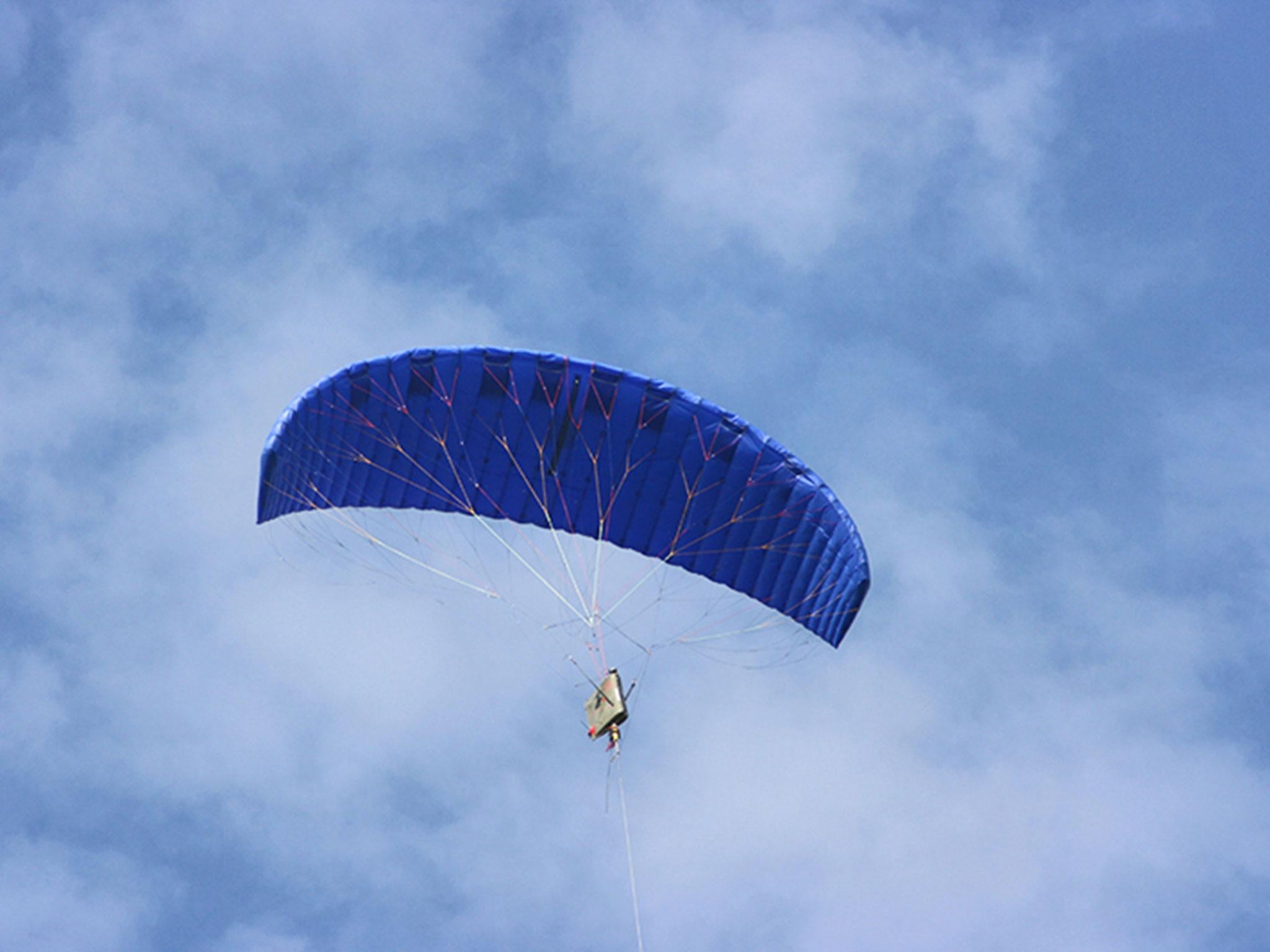One of world's first kite-driven power stations set to open in Scotland
The company behind the system say it is so cheap it will not need any kind of subsidy – unlike fossil fuels or most renewables

Your support helps us to tell the story
From reproductive rights to climate change to Big Tech, The Independent is on the ground when the story is developing. Whether it's investigating the financials of Elon Musk's pro-Trump PAC or producing our latest documentary, 'The A Word', which shines a light on the American women fighting for reproductive rights, we know how important it is to parse out the facts from the messaging.
At such a critical moment in US history, we need reporters on the ground. Your donation allows us to keep sending journalists to speak to both sides of the story.
The Independent is trusted by Americans across the entire political spectrum. And unlike many other quality news outlets, we choose not to lock Americans out of our reporting and analysis with paywalls. We believe quality journalism should be available to everyone, paid for by those who can afford it.
Your support makes all the difference.One of the world’s first commercial-scale, kite-driven power stations is set to be created near Stranraer in Scotland in what could be a major step towards finding the “magic solution” to humanity’s energy problems.
While kites have until now largely been flights of fancy that have entranced generations of children, Renaissance genius Leonardo da Vinci and poets like Robert Louis Stevenson and Joyce Carol Oates, their practical uses have seemed limited.
But those behind the new power station believe their system could cut the price of offshore wind energy in half.
It is so cheap, they say, that there will be no need for any Government subsidy – something currently required to build any new kind of power generation, renewable or fossil fuel.
Microsoft co-founder Bill Gates, who is investing billions in green technology, has said he believes there is a 10 per cent chance that kite power is the “magic solution” to the world’s energy problems.
Other companies are also investigating the potential of “kytoons” – kite/balloon hybrids – or even flying turbines that can capture the energy of the jet stream at altitudes of 20,000ft, where the wind is constant.
The firm behind the Stranraer project, Kite Power Systems has already demonstrated a small kite-driven power station in Essex.
But it now plans to build a 500-kilowatt system at the Ministry of Defence’s West Freugh Range near the southern Scottish town after securing planning permission. This will be the first of a significant scale in the UK and only the second in the world after a research project in Italy.
The kites fly to heights of up to 450m in a figure-of-eight pattern, pulling a tether as they rise which turns a turbine that produces electricity.
By having two kites working in tandem, one going up as the other floats back down, electricity can be generated continuously.
David Ainsworth, business development director at Kite Power Solutions, the firm behind the system, told The Independent that the system was mainly designed to be used offshore with the West Freugh power station designed to demonstrate its capabilities.
“Our systems basically float and the cost of the mooring is much lower than a wind turbine,” he said.
“It will be tariff-free, we just don’t need Government to support it. Our potential investors believe it’s going to take off in a big way."
The company now plans to relocate from Essex to Dumfries and Galloway. Mr Ainsworth said staff were “looking forward to relocating to this beautiful area of Scotland and developing this world-changing technology in this tremendous environment”.
He said traditional offshore wind turbines needed to be kept upright in the sea, so the mooring had to be quite rigid, adding to the cost.
“They are talking about 10 euro cents per kilowatt-hour [for the electricity produced], we’re basically going to halve that,” he said.
“We’re very optimistic we’ll have several hundred megawatts installed by 2025.”
A full-sized kite will be 40 metres wide and be capable of generating two to three megawatts of electricity, about the same as a 100m conventional turbine.
A field of just over 1,000 kites would produce as much electricity as the planned Hinkley Point C nuclear power station if the wind blew constantly.
According to the Met Office, Scotland is home to eight of the top 10 windiest places in the UK.
The wind blows so consistently on the unsheltered Atlantic coast that some people cannot stand to live there because of the noise and buffeting.
“The number of days we won’t be generating is very few, less than 10 days a year,” Mr Ainsworth said. “The number of really, really still days you get offshore is very small.”
On the rare still days, a small fan is used to keep the kite aloft so it can start generating as soon as the wind picks up.
The project has received backing from oil company Royal Dutch Shell and the UK Government.
Mr Ainsworth added that the system was less susceptible to storms and so could be used in places like the Pacific Rim despite the powerful typhoons that affect the region.
Lang Banks, director of WWF Scotland, said: “Kite-power technology offers the prospect of an exciting new way to harness the power of the wind, particularly in places where it might be impractical to erect a wind turbine.
“Alongside energy reduction schemes and other renewables, this technology could contribute to helping us to end our addiction to climate-changing fossil fuels.”
Join our commenting forum
Join thought-provoking conversations, follow other Independent readers and see their replies
Comments